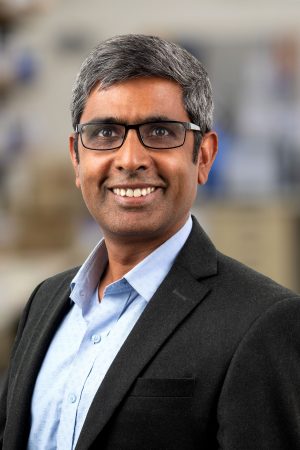
January 3, 2023
Salk researchers find that timing calorie intake synchronizes circadian rhythms across multiple systems in mice
Salk researchers find that timing calorie intake synchronizes circadian rhythms across multiple systems in mice
LA JOLLA—Numerous studies have shown health benefits of time-restricted eating including increase in life span in laboratory studies, making practices like intermittent fasting a hot topic in the wellness industry. However, exactly how it affects the body on the molecular level, and how those changes interact across multiple organ systems, has not been well understood. Now, Salk scientists show in mice how time-restricted eating influences gene expression across more than 22 regions of the body and brain. Gene expression is the process through which genes are activated and respond to their environment by creating proteins.

The findings, published in Cell Metabolism on January 3, 2023, have implications for a wide range of health conditions where time-restricted eating has shown potential benefits, including diabetes, heart disease, hypertension, and cancer.
“We found that there is a system-wide, molecular impact of time-restricted eating in mice,” says Professor Satchidananda Panda, senior author and holder of the Rita and Richard Atkinson Chair at Salk. “Our results open the door for looking more closely at how this nutritional intervention activates genes involved in specific diseases, such as cancer.”
For the study, two groups of mice were fed the same high-calorie diet. One group was given free access to the food. The other group was restricted to eating within a feeding window of nine hours each day. After seven weeks, tissue samples were collected from 22 organ groups and the brain at different times of the day or night and analyzed for genetic changes. Samples included tissues from the liver, stomach, lungs, heart, adrenal gland, hypothalamus, different parts of the kidney and intestine, and different areas of the brain.
The authors found that 70 percent of mouse genes respond to time-restricted eating.

“By changing the timing of food, we were able to change the gene expression not just in the gut or in the liver, but also in thousands of genes in the brain,” says Panda.
Nearly 40 percent of genes in the adrenal gland, hypothalamus, and pancreas were affected by time-restricted eating. These organs are important for hormonal regulation. Hormones coordinate functions in different parts of the body and brain, and hormonal imbalance is implicated in many diseases from diabetes to stress disorders. The results offer guidance to how time-restricted eating may help manage these diseases.
Interestingly, not all sections of the digestive tract were affected equally. While genes involved in the upper two portions of the small intestine—the duodenum and jejunum—were activated by time-restricted eating, the ileum, at the lower end of the small intestine, was not. This finding could open a new line of research to study how jobs with shiftwork, which disrupts our 24-hour biological clock (called the circadian rhythm) impact digestive diseases and cancers. Previous research by Panda’s team showed that time-restricted eating improved the health of firefighters, who are typically shift workers.
The researchers also found that time-restricted eating aligned the circadian rhythms of multiple organs of the body.
“Circadian rhythms are everywhere in every cell,” says Panda. “We found that time-restricted eating synchronized the circadian rhythms to have two major waves: one during fasting, and another just after eating. We suspect this allows the body to coordinate different processes.”
Next, Panda’s team will take a closer look at the effects of time-restricted eating on specific conditions or systems implicated in the study, such as atherosclerosis, which is a hardening of the arteries that is often a precursor to heart disease and stroke, as well as chronic kidney disease.
Other authors include Shaunak Deota, Terry Lin, April Williams, Hiep Le, Hugo Calligaro, Ramesh Ramasamy, and Ling Huang of Salk; and Amandine Chaix of the University of Utah.
The research was supported by the National Institutes of Health (grants CA258221, DK115214, CA014195, and AG065993) and the Wu Tsai Human Performance Alliance.
DOI: 10.1016/j.cmet.2022.12.006
JOURNAL
Cell Metabolism
TITLE
Diurnal transcriptome landscape of a multi-tissue response to time-restricted feeding in mammals
AUTHORS
Shaunak Deota, Terry Lin, Amandine Chaix, April Williams, Hiep Le, Hugo Calligaro, Ramesh Ramasamy, Ling Huang, and Satchidanananda Panda
Office of Communications
Tel: (858) 453-4100
press@salk.edu
Unlocking the secrets of life itself is the driving force behind the Salk Institute. Our team of world-class, award-winning scientists pushes the boundaries of knowledge in areas such as neuroscience, cancer research, aging, immunobiology, plant biology, computational biology and more. Founded by Jonas Salk, developer of the first safe and effective polio vaccine, the Institute is an independent, nonprofit research organization and architectural landmark: small by choice, intimate by nature, and fearless in the face of any challenge.